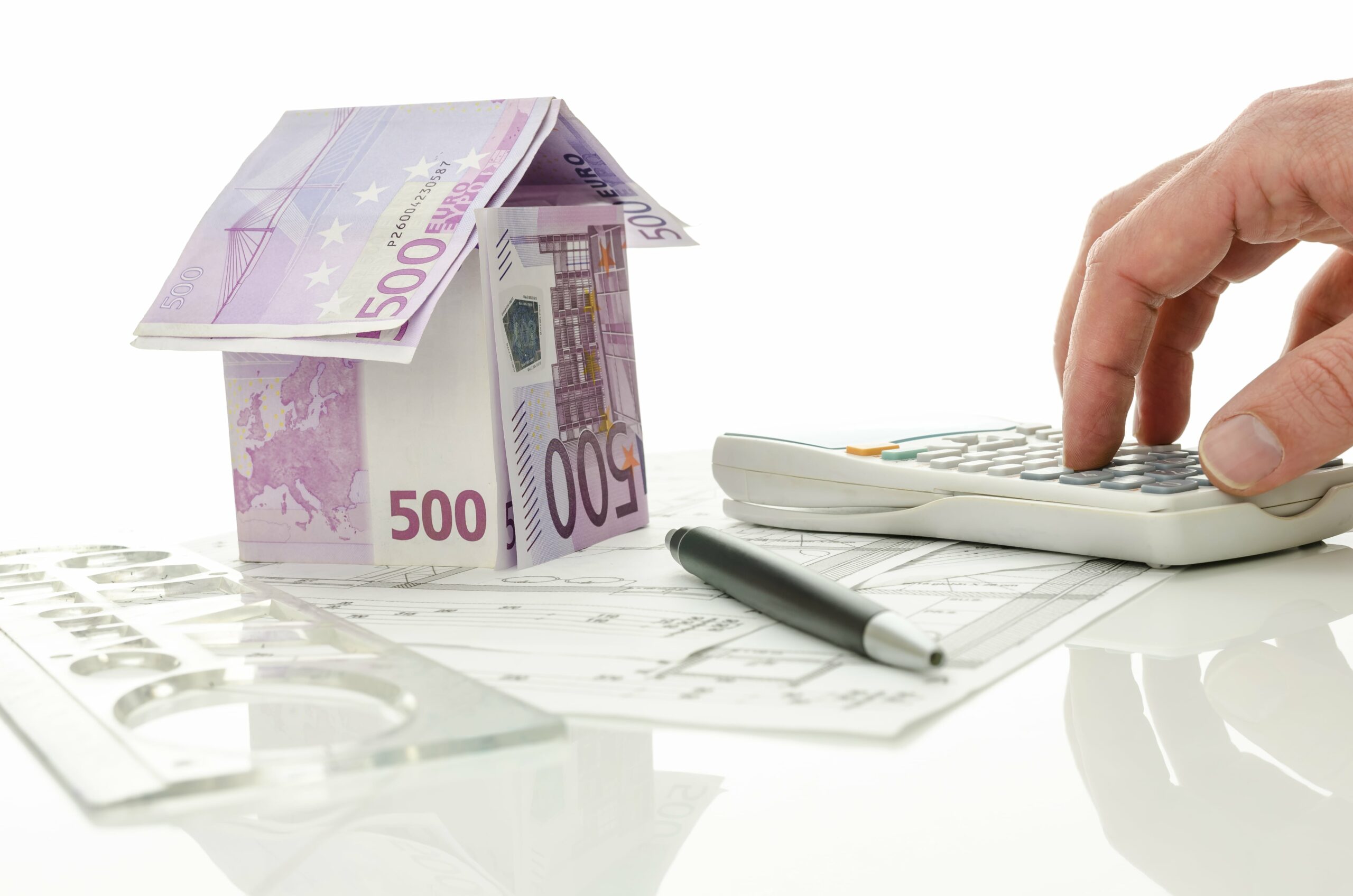Buying a Property
The 7 Steps to Buy a Property
Whether you’re contemplating your first purchase or your tenth, it is vital to know the ins and outs of buying property. The process of purchasing a home can be daunting, but if by breaking it down into manageable steps, it becomes much easier to handle. Here are the 7 essential steps to buying a property:

Step 1: Understanding Costs and Financing
The first step to buying a property is understanding the costs involved and how you will finance your purchase. A variety of expenses are associated with purchasing a home, including the down payment, closing costs, repairs, and maintenance. You’ll also need to consider how you will finance your purchase through a bank loan (mortgage) or another lending institution.
Costs upfront
Shortly after you make your offer and the seller accepts, you’ll be expected to pay a deposit, typically around 5-10% of the purchase price. This deposit is also known as an earnest money deposit and is used to show the seller that you are serious about buying the property. The deposit is usually held in escrow until closing, which will be applied to your down payment.

Valuation fees
The lender charges a valuation fee to cover the property’s cost. The appraisal is conducted by a professional appraiser and is used to determine the property’s value. This fee is typically around £300-500. The purpose of a valuation is to protect the lender in case the property is worth less than the amount the seller is receiving, leaving them vulnerable if you fail to pay your mortgage.
Stamp Duty Land Tax (SDLT)
Stamp Duty Land Tax is a tax that is levied on the purchase of property in the UK. The amount of SDLT you pay will depend on the property’s value, with higher prices requiring more tax. See the table below for an idea of what you’ll be expected to pay.
| Property Value | Additional portion taxed | SDLT rate |
|---|---|---|
| 0 to £125k | £125k | Zero |
| Up to £250k | £125k to £250k | 2% |
| Up to £925k | £250k to £925k | 5% |
| Up to £1.5 million | £925k to £1.5 million | 10% |
| Above £1.5 million | £1.5 million and upwards | 12% |
If you are a first-time buyer, you may be eligible for relief on SDLT. For properties worth up to £300,000, you will pay no SDLT.
Mortgage costs
If you are taking out a mortgage to finance your purchase, additional costs will be associated with this. These include the application fee, typically around £100-200, and the valuation fee, which we discussed earlier. You may also be required to pay for mortgage insurance if you deposit less than 20% of the purchase price. There can also be a product fee for the lender providing the mortgage, which could be as much as £2000.
Survey costs
A professional surveyor conducts a survey to assess the property’s condition. This differs from a valuation, which only looks at the property’s value. A survey is typically around £250-500 and is worth paying for, as it can give you an idea of any repairs that need to be made or any problems with the property.
Need help finding your new home today?
Step 2: Begin your Search
Register on our site and the major websites (such as Rightmove and Zoopla) to access the widest range of properties on the market. The buying stage can be quite hectic once you’ve received an offer on your existing property, so make sure you’ve already got a vision for what sort of home you want to move into. Once you’ve searched and found a shortlist of homes that appeal, get in touch with the agency marketing the property and request a viewing.
Step 3: Viewings and when to make an offer
The viewing process is your chance to determine whether the photographs have done the house justice and whether or not it meets all of your needs. Once you’ve found the house you want to make an offer on, it’s important to act fast, especially when the markets are as heated as they were in late 2021. In a seller’s market (where there are more buyers than properties available), properties can receive multiple offers and can even be sold before they are officially put on the market. If this happens, the agent will usually contact the people who have already expressed an interest in the property and give them the chance to make an offer. That said, don’t be afraid to ask for a second viewing if you find a property that tickles your fancy.
What to look out for when looking at a house
Just like people, a house will give you a first impression. How did you feel when you entered it? Did it feel like it would be a relaxing place for you? Did you envision how you would alter the property to suit your needs? If so, it might be the one for you. However, look for obvious signs of dampness, cracks in the walls and ceilings, peeling paint, mold, musty smells, and condensation on the windows. These all might indicate problems that can be costly to eradicate. If there’s none of that, great! Be sure to check out the area surrounding the property too. Is it in a safe neighborhood? Is it close to public transport and local amenities? These are all factors that you should consider before making an offer.

Now is the time to submit your offer
When you’re ready to make an offer, you will make it to the agent. The agent will submit it to the seller on your behalf. The seller can then accept, reject or counter-offer. If they counter-offer, this means they are willing to sell the property for a different price. The agent will usually act as a middleman, telling the seller how much they can realistically expect to get while trying to drive the buyer up towards the asking price.
Ask Questions
It’s important to ask the seller questions about the house. For example, you might want to know how old the boiler is, when the windows were last replaced, or if there have been any previous issues with damp or mould. The seller is obliged to answer these questions honestly; if they don’t, you could use this to renegotiate the property’s price. If you’re buying a leasehold property, it’s also important to ask about the length of the lease, the service charge (if applicable), and whether there are any restrictions on alteration or subletting.
Step 4: Instructions to a solicitor
You’ll need a conveyancing lawyer to help with the legal aspects of buying a house. They will check that there are no problems with the property. They will check for planning permission for any extensions that have been made and ensure the property is connected to a public sewer. The solicitor will also request and review a copy of the title deeds to ensure that the seller is the rightful owner of the property. Lovett&Co. Estate Agents has a conveyancing service, helping us to take one decision off your shoulders.

Choosing the right solicitor
The most important thing when choosing a solicitor is that you feel confident in their abilities and that they are communicative. This is a big decision, and you’ll want to be kept in the loop every step of the way. You’ll also want to check that they have been awarded the Conveyancing Quality Scheme (CQS) certificate.
What is the cost of a solicitor?
Solicitors typically charge anywhere between £500 and £2000 (sometimes more) depending on the complexity of the sale. Conveyancing fees are generally made up of the legal fee and disbursements. Disbursements are costs that the solicitor will incur on your behalf during the process, such as Land Registry fees or search fees. You can ask your solicitor for an estimate of the total cost at the start of the process so that you can budget accordingly. Some solicitors will charge you a fee regardless of the outcome of your sale, while others will offer a “no move, no fee” option, meaning if the sale falls through, you won’t be on the hook for any fees, though the overall fee may be slightly higher as a result.
Step 5: Wait for the offer to be accepted
Usually, it will only take a day or so to hear back whether your offer has been accepted. Once the offer is accepted, it’s time to move on to the next stage. This is where your solicitor will request a draft contract from the seller’s solicitor, which will set out all of the terms and conditions of the sale. Your mortgage lender will also be involved at this stage. They’ll conduct a valuation of the property to make sure it’s worth the price you’re paying, and they’ll also carry out a survey to check for any structural issues. These come at a fee, and you’ll be asked which level of survey you want to have performed. The minimum survey level is a condition report. This will list any defects found without going into detail. The next level-up is a homebuyer’s report, which will give you more information on the property’s condition and an estimate of repair costs. The most comprehensive survey is a building survey, which is recommended if the property is an older build or if you’re planning on doing any major renovations.
Step 6: Exchange and Completion
Nearly there. This part can be excruciating, as you’re now in the hands of the solicitors. You can expect this portion of the process to last a minimum of eight weeks, but it can often take longer. During this time, your solicitor will work on the final contract, ensuring that all of the terms and conditions are in order. They’ll also carry out all necessary checks on the property to ensure no outstanding issues.
Exchange contracts
Your solicitor will liaise with the other party’s solicitor to arrange a date for contract exchange. They will each complete the relevant paperwork and exchange them, ready for your signatures. You’ll now pay your deposit, and the sale will be at the ‘Exchange of Contract’ point. From this point on, the sale is legally binding, and you can’t back out without forfeiting your deposit.

